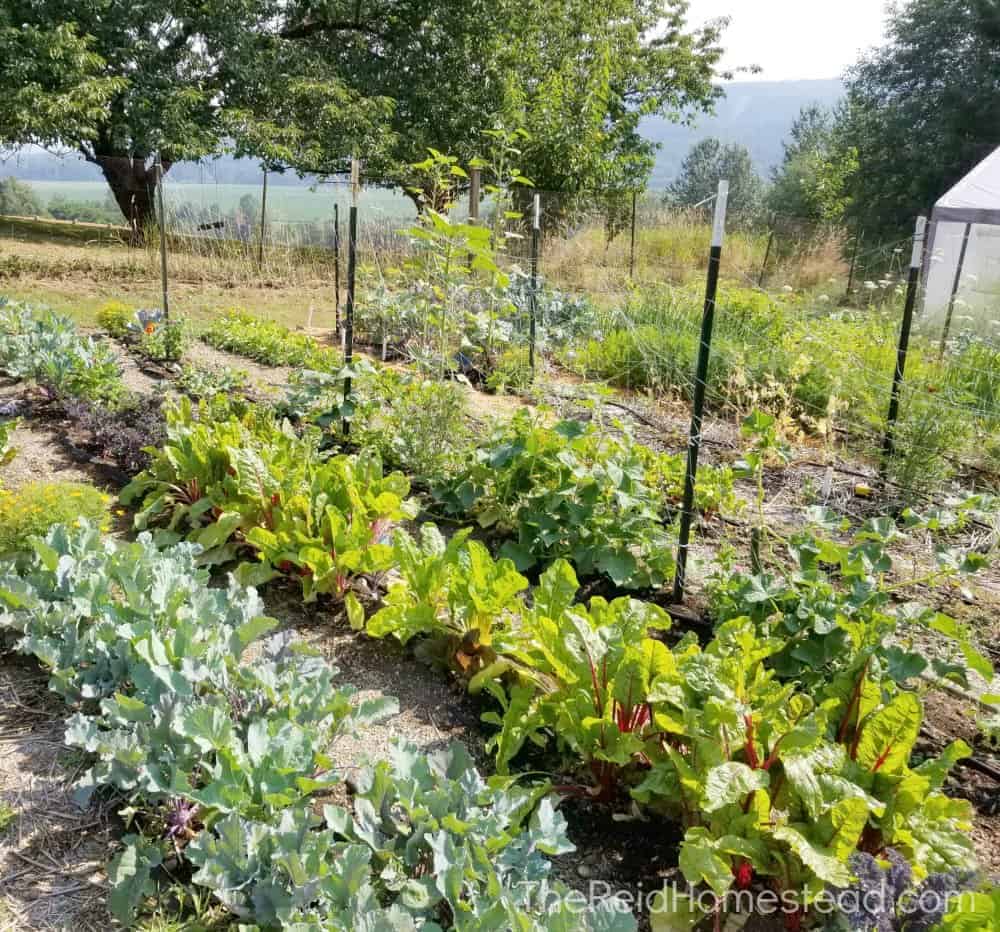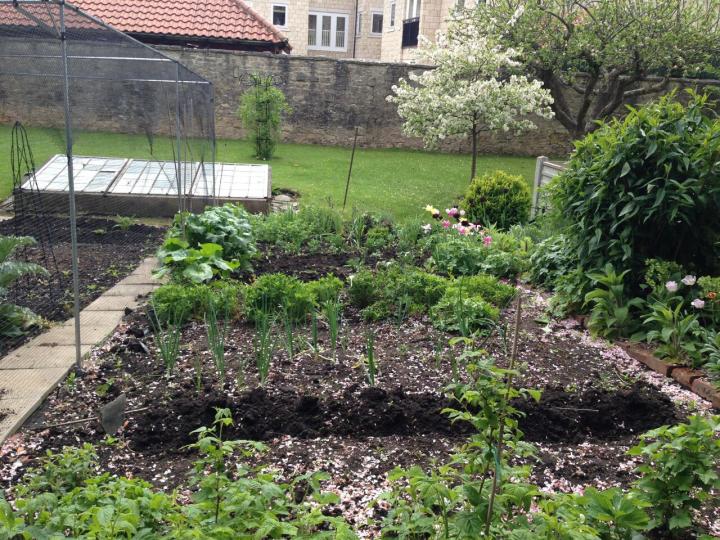Step-by-Step Guide to Homestead Gardening Effort
Step-by-Step Guide to Homestead Gardening Effort
Blog Article
Learn Exactly How to Cultivate a Thriving Gardening Environment for All Ability Degrees
Producing a growing garden is a complex endeavor that can be welcomed by people at any type of skill degree. By checking out essential components such as dirt wellness, suitable plant selection, and seasonal treatment regimens, one can create a lasting gardening technique that produces rewarding outcomes. Recognizing how to analyze and improve your garden room lays the foundation for success. Yet, the complexities of carrying out these principles frequently existing difficulties that can deter also the most enthusiastic novice. What strategies can be utilized to overcome these challenges and foster a truly successful setting?
Comprehending Your Yard Space
In the realm of horticulture, recognizing your garden area is paramount to cultivating a prospering landscape (Homestead Gardening). The primary step in this venture involves analyzing the specific qualities of your plot. Aspects such as dirt composition, sunlight exposure, and drain play essential roles in determining the suitability of your yard for various kinds of plants
Begin by carrying out a soil test to examine pH degrees and nutrient material, which will notify any type of needed modifications. In addition, observe how much sunshine your room obtains throughout the day. Various plants have differing light needs; some grow in complete sunlight, while others like partial or complete shade.

Lastly, evaluate the available room and strategy as necessary. This consists of taking into consideration plant elevations and infected guarantee sufficient room for growth without congestion. By obtaining a thorough understanding of your yard space, you established the structure for a successful gardening experience.
Choosing the Right Plants
Choosing the right plants for your garden needs careful consideration of numerous aspects, including climate, dirt conditions, and individual preferences. Beginning by examining your regional environment, as certain plants prosper specifically temperature level ranges and climate patterns. Tropical plants may not endure in chillier regions, while hardy perennials can stand up to severe winters months.

Consider your individual preferences, consisting of visual appeal and upkeep degrees. Make a decision whether you prefer dynamic blossoms, lush vegetation, or edible crops. Additionally, consider the time and effort you are eager to buy plant care, as some varieties require even more attention than others.
Finally, consider the yard's format and light exposure. Sunshine patterns throughout the day will influence your options-- some plants call for full sun, while others prosper in shade. By attentively analyzing these elements, you can produce a unified and effective yard customized to your setting and tastes.
Crucial Gardening Devices
A well-appointed garden enthusiast can significantly enhance their gardening experience and outcomes. Important horticulture devices are basic to growing an effective garden, no matter skill level. A durable spade is indispensable for digging and turning dirt, while a trowel permits for exact planting and transplanting of smaller sized plants.
Trimming shears are important for maintaining plant health by getting rid of dead or disordered branches, promoting better air circulation and growth. Additionally, a hand rake serves for getting rid of debris and aerating the soil, guaranteeing optimal problems for plant roots.
Gardening handwear covers shield hands from sores, thorns, and chemicals, making them an important device. A watering can or pipe with an adjustable nozzle ensures that plants get sufficient moisture without overwatering.
Last but not least, consider spending in a durable wheelbarrow for transferring dirt, plants, and devices around the yard efficiently. By constructing a high quality toolkit click here to read that consists of these vital items, garden enthusiasts can tackle different tasks with self-confidence and convenience, leading the way for a prospering horticulture environment. Bear in mind, the right tools not only boost efficiency however also improve the total pleasure of the horticulture process.
Soil Prep Work and Upkeep
Quality soil is the structure of an effective yard, making proper prep work and upkeep important for healthy and balanced plant development. The very first step in dirt prep work Clicking Here entails evaluating its pH and nutrient levels. This can be attained via soil testing sets offered at horticulture facilities or through professional services. Based upon the examination results, modifications can be made to optimize dirt conditions for specific plant demands.
Including natural matter, such as garden compost or well-rotted manure, is crucial for improving soil framework and fertility. This not only improves nutrition accessibility however likewise advertises helpful microbial task. Furthermore, appropriate drain is crucial; hefty clay soils may require the enhancement of sand or perlite to boost oygenation.
Routine maintenance of soil health includes mulching, which conserves dampness and suppresses weeds. Moreover, rotating plants every year assists stop nutrient exhaustion and decreases bug and illness dangers. It is additionally essential to avoid over-tilling, which can interfere with dirt structure and damage helpful organisms.
Ultimately, a regular dedication to soil prep work and maintenance will certainly cause a growing garden, making certain that plants get the important nutrients they require for robust growth and efficiency.
Seasonal Treatment and Monitoring

In spring, emphasis on planting new seeds and seed startings, while also conducting dirt tests to amend nutrient shortages. Consistently inspect for diseases and bugs, as these can proliferate with the warming weather condition. Summer season demands regular watering and mulching to retain moisture, in addition to pruning for much better air blood circulation.
As autumn techniques, it's time to prepare the yard for dormancy. This consists of gathering plants, tidying up particles, and using a layer of mulch to safeguard plant origins from frost. Consider planting cover crops to improve the soil during the wintertime months.
Lastly, winter season treatment is critical. Examine structures like greenhouses for damages and make certain proper insulation for sensitive plants. On a regular basis check for pests that may seek sanctuary inside. By adapting your horticulture techniques to the seasonal cycles, you can promote a prospering environment that supports plant health year-round.
Verdict
To conclude, growing an effective yard needs a detailed understanding of crucial principles such as dirt structure, sunlight exposure, and appropriate plant selection. Implementing effective dirt preparation and maintenance methods, along with utilizing the right devices, cultivates an ideal growing environment. Normal seasonal care and management techniques better boost plant health and wellness and productivity. By adhering to these fundamental guidelines, individuals in any way skill degrees can attain a growing garden that adds to both visual enjoyment and ecological sustainability.
Picking the right plants for your garden calls for careful factor to consider of different factors, consisting of climate, soil conditions, and personal choices. Conduct a soil examination to figure out pH degrees and nutrition web content, which will certainly assist you in selecting plants that will certainly flourish in your yard.Last but not least, think about spending in a durable wheelbarrow for transporting soil, plants, and devices around the garden successfully.Quality soil is the structure of an effective garden, making appropriate prep work and maintenance important for healthy and balanced plant growth. Homestead Gardening.In final thought, growing a successful garden calls for a comprehensive understanding of necessary concepts such as dirt composition, sunshine direct exposure, and appropriate plant choice
Report this page